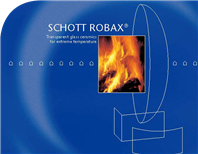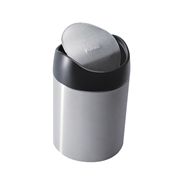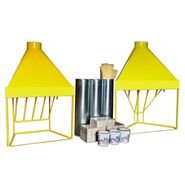Schott Robax
vidros especiais
vidros
vidro para lareira
vidro resistente ao fogo
vidros para churrasqueira
vidro cerâmica
16
4.
4.3 Thermal properties
4.3.1 Coefficient of mean linear
thermal expansion
4.3.2 Specific heat
4.3.3 Thermal conductivity
4.3.4 Resistance to thermal
gradients (RTG)
4.3.5 Resistance to thermal
shock (RTS)
4.3.6 Temperature/time loading
The RTG value is a measure of how well a material can resist temperature
differences on a restricted area, e.g. the temperature difference between the hot
area in the center of a panel and the cold edge area (room temperature).
No breakage caused by thermal stress occurs at a maximum temperature of
Tmax ≤ 700 °C.
The RTS value is a measure of the panel’s ability to withstand a sudden thermal
shock.
No breakage caused by thermal stress occurs at a maximum temperature of
Tmax ≤ 700 °C.
The temperature/time loading limits determine the permissible temperature for
set usage times at which no breakage caused by thermal stress occurs.
The pairs of values in the following table are relevant for the practical usage of
glass ceramic as a vision window for stoves and room heaters.
The temperature values refer to the hottest points on the outside of the panel.
It must be ensured that these temperature/time loading limits are not exceeded.
Taking resistance to thermal gradients and thermal shock into account, the
following apply:
Usage temperature Usage time
560 °C 5,000 h
610 °C 1,000 h
660 °C 100 h
710 °C 10 h
760 °C 5h
(20-700 °C) (0 ± 0.5) x 10-6/K
cp(20-100 °C) approx. 0.8 x 103 J / (kg x K)
(90 °C) approx. 1.6 W / (m x K)
Schott Robax
vidros especiais
vidros
vidro para lareira
vidro resistente ao fogo
vidros para churrasqueira
vidro cerâmica
17
4.
The chemical composition of ROBAX® complies with the requirements for a glass
ceramic in accordance with EN 1748 T2.
ROBAX® is made of ecologically safe raw materials. The glass can be reused
through recycling of the material (see point 8).
Glass grain hydrolytic resistance class according to ISO 719: HGB 1
2 g of glass grains are heated with 50 ml of water for one hour in a boiling water
bath. Then the alkali (sodium, potassium) given off is titrated with hydrochloric
acid (HCI). On the basis of the acid usage or alternatively alkali leached out, the
glasses are classified into the five hydrolytic classes below:
4.4 Chemical properties
4.4.1 Chemical composition
4.4.2 Hydrolytic resistance
Hydrolytic class Possible description
HGB 1 high-resistance glass
HGB 2 resistance glass
HGB 3 medium-resistance glass
HGB 4 low-resistance glass
HGB 5 very low-resistance glass








 Lixeira de Mesa Countertop 1,5 litro Deluxe
Lixeira de Mesa Countertop 1,5 litro Deluxe
 Forno a lenha Iglú Chaminé frontal
Forno a lenha Iglú Chaminé frontal
 Lareiras a lenha para revestimento em alvenaria Kits completos
Lareiras a lenha para revestimento em alvenaria Kits completos